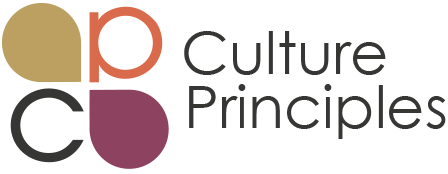
In the first part of this series, we explored how the language used in DEI policies can foster inclusivity or perpetuate exclusion. We discussed the importance of clear definitions and actionable steps to ensure that DEI initiatives are effective and meaningful. As we move deeper into the complexities of DEI language, we also need to address the practical principles for crafting inclusive language and navigating terms that might be seen as polarizing.
The language we use in DEI efforts can significantly impact their success. Terms that resonate with one group might alienate another, and words that once carried a positive connotation might be co-opted or misunderstood over time. To create an inclusive workplace, it is important to understand these dynamics and adopt strategies that make DEI language both clear and inclusive.
This article will discuss several key principles for crafting effective and inclusive DEI language.
Additionally, we will explore how to navigate terms that various groups might perceive differently, ensuring that your DEI initiatives remain relevant and impactful.
Let’s explore these principles and strategies to strengthen DEI efforts that build bridges and foster more inclusive environments.
Principles for Crafting Inclusive DEI Language
To counteract pitfalls in DEI languaging, organizations can adopt several principles to ensure their DEI language is clear, inclusive, and actionable:
Clarity: Use specific, straightforward language that articulates concrete actions. For example, instead of saying, “We value diversity,” a more explicit statement would be, “We will implement mentorship programs to support the career growth of underrepresented employees, with a target of matching 50 mentor-mentee pairs by the end of the year.” This specificity leaves no room for ambiguity and provides a tangible, measurable goal that employees can understand and work towards. It also helps set expectations and create accountability within the organization.
Understanding the Bigger Why: Emphasize the broader benefits of diversity and inclusion for everyone, not just for underrepresented groups. While acknowledging historical injustices is essential, it is equally crucial to highlight how DEI initiatives contribute to the organization’s overall success. Diverse teams drive innovation, improve decision-making, and enhance overall performance by helping people understand the bigger why behind these efforts; you can foster a sense of collective benefit and shared purpose, encouraging broader buy-in and participation from all employees. This comprehensive understanding ensures that DEI initiatives are seen not only as a remedy for past inequities but also as a vital component of a thriving, dynamic workplace.
Inclusivity: Ensure as many identities and experiences are considered as possible when drafting policies to mitigate making assumptions about any group’s needs or characteristics. Inclusion here means engaging with a diverse range of voices when creating DEI policies and being mindful of language that might unintentionally exclude certain groups. For example, instead of using binary gender terms, opt for more inclusive language such as “all genders” or “people of all gender identities.” Additionally, consider the intersectionality of identities, recognizing that individuals may simultaneously belong to multiple historically marginalized groups.
Engagement: Foster open dialogue and continuous feedback. Encourage employees to share their experiences and perspectives on DEI initiatives. This engagement helps identify gaps or misunderstandings in the language used and ensures that policies remain relevant and effective. Regularly reviewing and updating DEI policies based on feedback can also demonstrate a commitment to continuous improvement and responsiveness to employee needs.
Transparency: Be open about DEI initiatives’ goals, progress, and challenges. Regular updates and reports on DEI efforts can build trust and show that the organization is serious about its commitments. Transparency also helps to demystify DEI initiatives, making them more accessible and understandable to all employees.
By integrating these principles into their DEI language and policies, organizations can create a more inclusive and effective environment that more fully reflects their commitment to diversity, equity, and inclusion.
How clear are your DEI commitments? Can your employees see the action behind the words?
Navigating Polarizing DEI Terms
When using DEI terms that may be considered polarizing, it’s vital to employ a variety of terms while holding space for how they may be interpreted. The challenge I frequently encounter is how words can be co-opted to have new meanings. It’s critical to get clear on how people define things before getting too deep into the conversation.
For instance, consider the term “woke.” Originally used to describe awareness of social injustices and a commitment to addressing them, “woke” has been co-opted in some circles to carry negative connotations, often used dismissively or as a pejorative. Similarly, “allyship” is a term intended to convey support and advocacy for marginalized groups, but it can be interpreted variably, sometimes seen as performative if not backed by action.
Diverse Terminology: Employ multiple terms to describe similar concepts, recognizing that different terms resonate differently across various groups. For example, while some may resonate with “equity,” others might find “fairness” or “justice” more relatable. Using varied terminology ensures that the message reaches a broader audience and avoids alienating those with different interpretations of specific terms.
Open Dialogue: Foster an environment where employees feel comfortable discussing and questioning DEI terms, ensuring mutual understanding. Encourage employees to share their perspectives on what certain terms mean to them and how they impact their sense of inclusion within the organization. This dialogue helps identify and bridge understanding gaps, making DEI initiatives more effective and inclusive. My clients and I often have conversations around terms like “professionalism” and “respect,” for example.
Contextual Sensitivity: Be aware of the socio-political context in which certain DEI terms are used, as their meanings can shift over time and across different communities. For example, terms like “intersectionality,” coined to describe how various forms of discrimination overlap, can be misunderstood or oversimplified if not properly contextualized. Providing historical and social context can help clarify the intended meaning and importance of these terms.
Crafting inclusive DEI language and navigating polarizing terms requires intentionality, sensitivity, and adaptability. Organizations can create a more inclusive and equitable workplace by employing clear, specific language, understanding the broader benefits of DEI initiatives, ensuring inclusivity, fostering open dialogue, and maintaining transparency.
The importance of language in DEI initiatives cannot be overstated. Words have the power to unite or divide, to clarify or confuse. By carefully considering the terms we use and being mindful of their interpretations and impacts, we can foster an environment where everyone feels valued and understood.
As we move forward, let’s remain committed to continuous learning and adaptation. The language landscape is ever-evolving, and our DEI strategies must evolve with it. By doing so, we not only strengthen our organizations but also contribute to a more just and inclusive society.
The principles and strategies discussed in this article provide a framework for effective DEI communication. By integrating these approaches, organizations can navigate the complexities of DEI language, ensuring that their initiatives are not only well-intentioned but also impactful and enduring.
Let’s continue this journey towards inclusivity, embracing the power of words to build a better, more equitable future for all.
